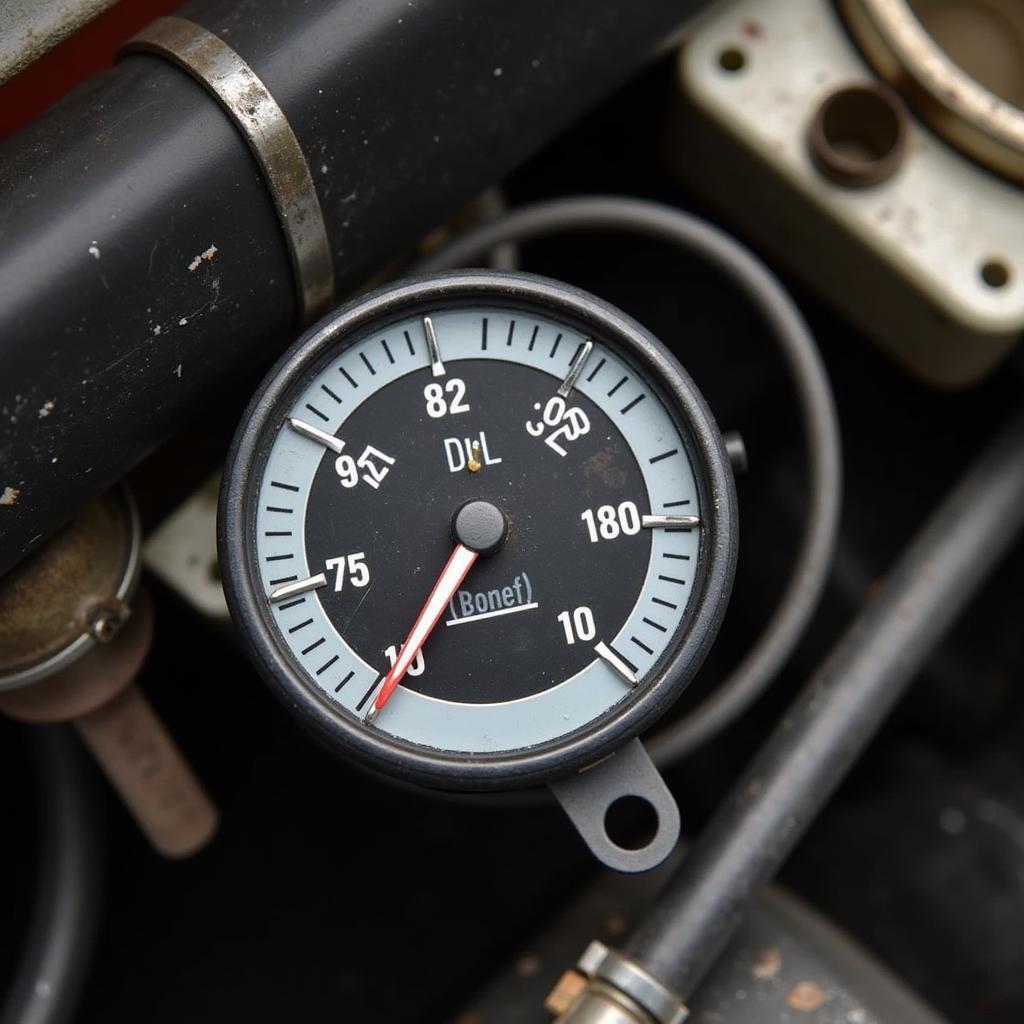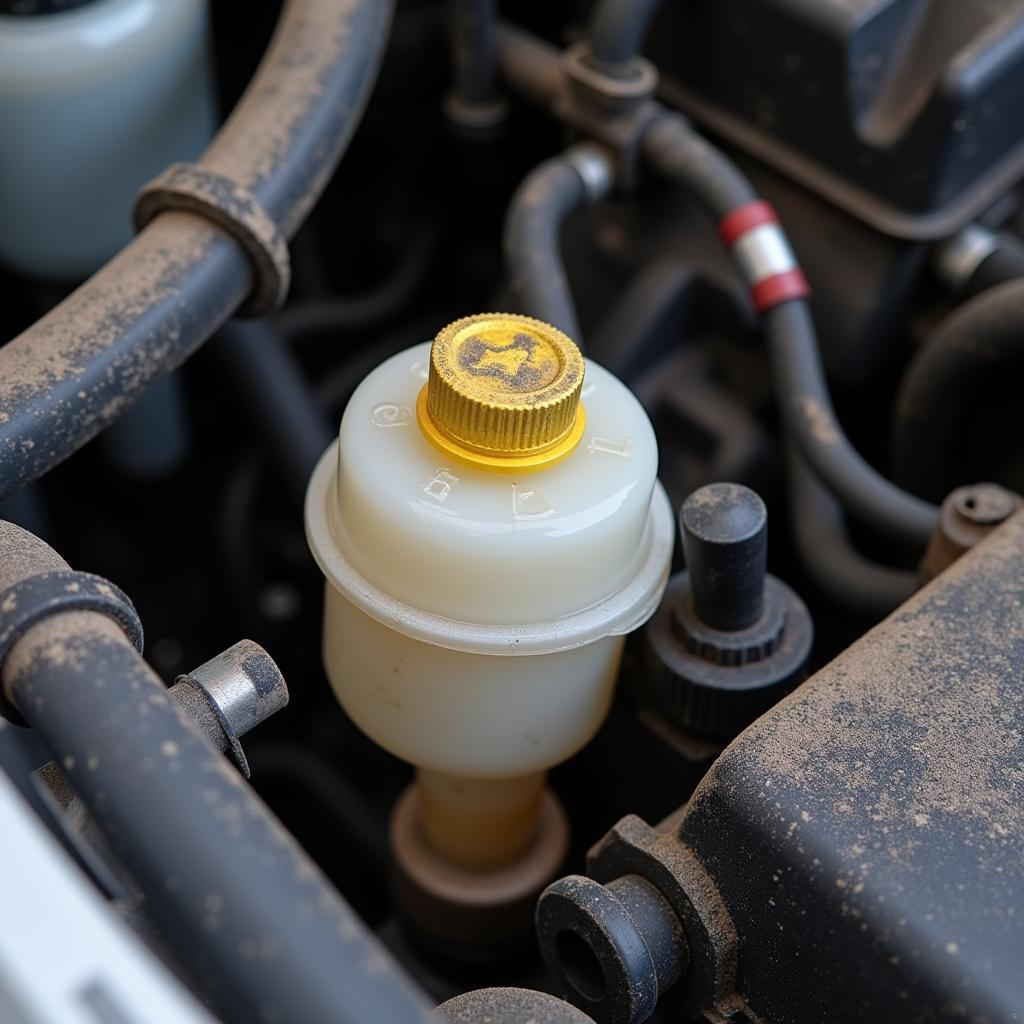A “Tesla Model 3 low voltage battery warning” can be a concerning sight. This article will explore the reasons behind this warning, offer troubleshooting steps, and discuss preventative measures to keep your Tesla running smoothly. We’ll delve into the complexities of the 12V battery system, its role, and how to address potential issues.
The 12V battery in your Tesla Model 3, much like in a conventional gasoline car, powers various accessories such as lights, wipers, and the infotainment system. It’s also crucial for starting the high-voltage system that propels the vehicle. Unlike traditional cars, however, the 12V battery in a Tesla isn’t directly charged by an alternator but is charged by the main high-voltage battery. A failing 12V battery can cause a cascade of problems, impacting drivability and overall functionality.
Understanding the Tesla Model 3 12V Battery System
Why is the 12V battery so important? While the high-voltage battery provides the power for driving, the 12V system handles all the conventional car functions. It’s the backbone of many crucial systems, and a failure can leave you stranded.
Common Causes of a Low Voltage Battery Warning
Several factors can trigger a low voltage battery warning. These include:
- Parasitic Drain: Something is drawing power from the 12V battery even when the car is off, like a faulty accessory or a software glitch.
- Failing 12V Battery: Like any car battery, the 12V battery in a Tesla has a limited lifespan and will eventually need replacing.
- Issues with the DC-DC Converter: This converter charges the 12V battery from the main battery. A malfunctioning converter can prevent the 12V battery from charging properly.
- Software Issues: Occasionally, a software bug can trigger the warning even if the battery is fine. A software update might be necessary. If you recently had issues with an engine warning light after jump start on another vehicle, this might offer some insight into similar electrical issues.
“A common misconception is that the high-voltage battery charges the 12V system directly. It’s the DC-DC converter that performs this crucial function, and any issue with it can lead to a low voltage warning,” says John Miller, Senior Automotive Electrical Systems Engineer.
Troubleshooting the Low Voltage Battery Warning
If you see the low voltage battery warning, here are some troubleshooting steps:
- Check for Error Messages: Look at the touchscreen for specific error messages that might offer clues.
- Try a Reboot: Sometimes a simple reboot of the touchscreen can resolve the issue. Hold down both scroll wheels on the steering wheel until the screen goes black.
- Check for Parasitic Drain: If you have a multimeter, you can check for parasitic drain by disconnecting the negative terminal of the 12V battery and measuring the current flow.
If these steps don’t resolve the issue, it’s best to contact Tesla Service. You may have a failing 12V battery or a problem with the DC-DC converter. This may be similar to issues experienced with a Tesla Model S low voltage battery warning, highlighting the importance of the 12V system across Tesla models. You can learn more about general Tesla battery issues by visiting our Tesla battery warning page.
Preventing Future Low Voltage Battery Issues
Here are some tips to prevent future low voltage battery warnings:
- Regularly Monitor the 12V Battery Voltage: Consider using a third-party device to monitor your 12V battery voltage.
- Minimize Sentry Mode and Cabin Overheat Protection Usage: These features can drain the 12V battery, especially in hot weather. If you’re concerned about a air bag and seat belt warning light, remember that these systems are also connected to the 12V system, highlighting its importance.
- Keep Your Tesla Software Updated: Software updates often include fixes for bugs that can affect the 12V battery.
“Preventative maintenance is key to avoiding low voltage battery issues. Regularly checking the voltage and minimizing the use of power-hungry features can significantly extend the life of your 12V battery,” says Emily Carter, Lead Technician at a Tesla Service Center.
Conclusion
The “Tesla Model 3 low voltage battery warning” shouldn’t be ignored. Understanding the causes and implementing the troubleshooting steps and preventative measures outlined in this article can help keep your Tesla on the road and avoid potential headaches.
FAQ
- How long does a Tesla Model 3 12V battery last? Typically, 3-4 years.
- Can I jump-start my Tesla Model 3? Yes, but it should be done cautiously and correctly.
- What is the cost of replacing a Tesla Model 3 12V battery? The cost varies but expect to pay a few hundred dollars.
- Does Tesla offer roadside assistance for 12V battery issues? Yes, Tesla offers roadside assistance for various issues, including 12V battery problems.
- Can I replace the 12V battery myself? It’s possible, but it’s recommended to have a Tesla-certified technician perform the replacement.
- How often should I check my 12V battery voltage? Checking it monthly is a good practice.
- Will a low 12V battery affect my Tesla’s performance? It won’t directly affect driving performance, but it can prevent the car from starting or cause malfunctions in accessories.


